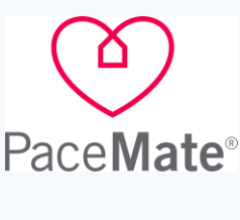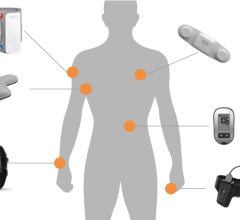
There is a growing trend in electrophysiology toward remote, home monitoring of implantable cardioverter defibrillators (ICDs), cardiac resynchronization therapy (CRT) devices, pacemakers and implantable cardiac monitors (ICMs). Remote monitoring can help alleviate the volume of in-office patient follow-ups, allow physicians to monitor more patients, makes follow-up compliance easier for patients, and can give early warning of cardiac problems. Nonwireless systems transmit pacemaker data using a magnetic sensor a patient places over their device. It feeds the data into a phone modem to transmit transtelephonic rhythm strips to a physician’s office or a remote monitoring service. The newest generations of pacemakers, ICDs, ICMs and CRTs from most major manufacturers are now compatible with automated, Web-based, remote monitoring systems. Each of these systems use proprietary and only work with compatible devices made by the same manufacturer. These monitoring systems are wireless and automated, downloading patient data from the device using radio transmissions to communicate with a base station located next to a patient’s bed. The system can be programmed to download data at specific dates and times, usually when a patient is sleeping and located near the base unit . The base unit automatically dials up a phone-based Internet connection and transmits the data to the doctor’s office. The newer systems can be programmed to transmit data from the implanted devices at regular follow-up intervals, or can be set to transmit if specifically programmed triggers are activated, such as settings that are out of range, delivered shocks, or other parameters set by the doctor. Information relayed remotely to the healthcare provider may include heart rhythm changes, device malfunction and fluid retention in the lungs. The systems can send special alerts between regularly scheduled follow-ups. The receiving computer system can be programmed to look for interesting events, as defined by the doctor and the patient. This is referred to as “exception-based management,” which is to monitor and act on rhythms that are the exception to normal heart function. When events trigger an alert, physicians can be notified automatically via text message, fax, e-mail or a Web site message. If the results are normal, the information is simply downloaded into the patient’s electronic medical record (EMR). Some systems allow the patient to review this information using a secure Web site. In 2001 Biotronik was the first company with an FDA-approved wireless, remote monitoring system – Home Monitoring. Medtronic followed in 2005 with CareLink, Boston Scientific in 2006 with Latitude, and St. Jude in 2007 with House Call. Remote monitoring can significantly increase the number of patients served without requiring extra resources, while at the same time freeing office schedules to meet with patients who are experiencing problems. The Cleveland Clinic conducted a study in 2008, which showed an increasing number of patient evaluations can be managed without directly increasing demands on clinic staff time and resources. The study tracked ongoing ICD device follow-up patient visits over a four-year period. Using Web-based data transmissions, the clinic said it was able to better manage time and overall utilization of in-clinic resources. During the study, remote evaluations increased from 94 to more than 5,000 patients without adding additional staff. Just for patients with defibrillators, the clinic had 7,000 scheduled appointments per year. Today the Cleveland Clinic says it remotely monitors 5,000 of those patients, which includes about 12,000 remote checks. Some systems provide ways to monitor heart failure. The OptiVol Fluid Status Monitoring, found on Medtronic cardiac resynchronization therapy-defibrillators (CRT-Ds) and implantable cardioverter-defibrillators (ICDs), can detect fluid build-up in the chest, a common symptom of heart failure. Some systems also offer options to connect a weight scale and blood pressure monitor to the base unit so the information can be transmitted remotely. Over the past couple years implantable cardiac monitors (ICMs), without cardiac rhythm management features, have become available to serve as long-term Holter monitors. These devices allow long-term ECG monitoring without external leads connected to a recording device. They use a wireless, implantable system to help diagnose cardiac arrhythmias and the causes of syncope. St. Jude Medical’s Confirm, Medtronic’s Reveal XT and Transoma Medical’s SLEUTH AT are recently FDA-cleared ICMs. The Transoma device can be programmed to automatically record when physician-programmed triggers are activated, or the patient can activate the device manually. It uses a PDA device to record events wherever the patient is and the data can be downloaded later to the base unit for remote transmission. There are CPT (current procedural terminology) codes assigned for remote monitoring interrogation of pacemakers and ICDs, which can be billed every 90 days. Two new CPT codes, effective Jan. 1, 2009, reimburse remote monitoring and technical support for ICMs. These codes allow billing for remote device interrogations every 30 days. Sorin Group is the last major pacemaker, ICD, CRT manufacturer that does not have a wireless remote monitoring system. However, in March Sorin and Orange Business Services entered into an agreement to develop a remote monitoring solution for its implantable devices.


 September 16, 2025
September 16, 2025 









